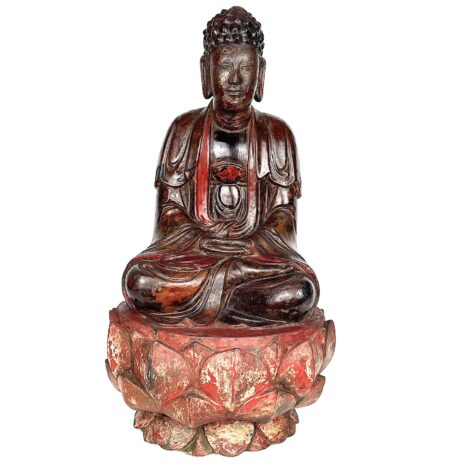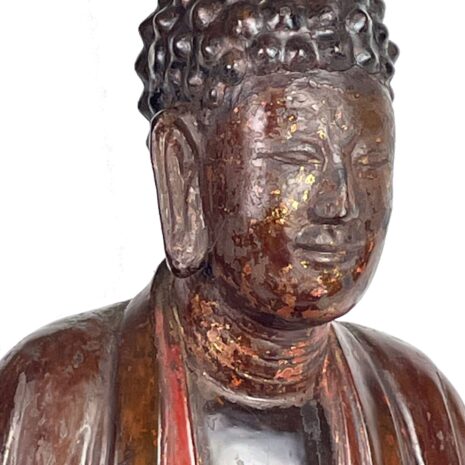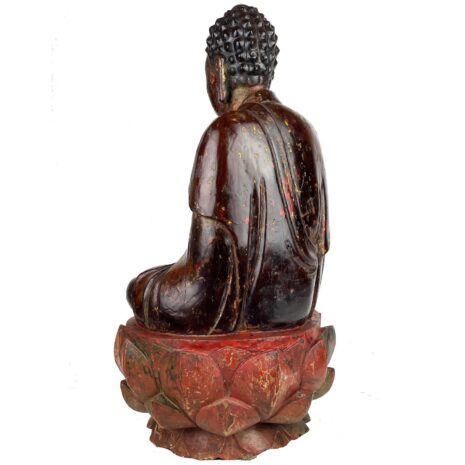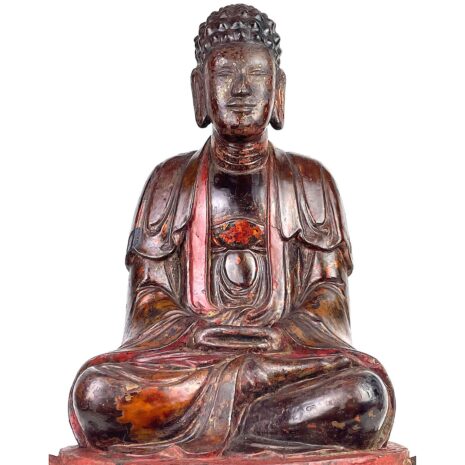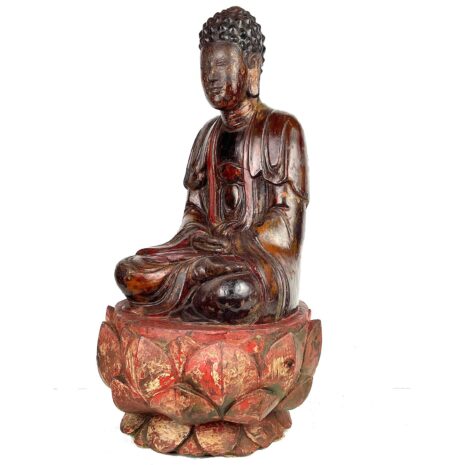Ming Wood Shakyamuni Buddha on Lotus Pedestal, China, H:18.75″
Original price was: $2,800.00.$2,100.00Current price is: $2,100.00.
H: 18.75: W: 9.75” D: 9” | Call us AT 213-568-3030 fOR SHIPPING and price information
Magnificent rare Ming Buddha covered with dark lacquer, indications of gold and red pigmentation. Seated in meditation on an elaborate lotus throne, this rare masterpiece would enhance any environment with its spiritual energy and beauty.
Description
Although there have been countless Buddhas, only Shakyamuni is considered The Buddha, the historical figure who lived on earth and was the source and creator of Buddhist doctrine. This Mahayana Buddha sits in meditation (dhyana) legs in padmasana with one foot faced up, both hands in lap and thumbs touching in a triangle symbolizing the triratna, the Three Jewels of Buddhism: the Buddha, the dharma (Buddha’s teachings) and the sangha (religious community). He wears a three-part monk’s robe (dhoti) gathered at the waist with a shawl over his shoulders extending to his back. He radiates serenity with a beautiful benign expression emphasized by downcast eyes, an aquiline nose and a slightly smiling mouth. He has the Buddha’s identifying features referred to as lakshanas: pendulous ears symbolizing enlightenment, three neck creases symbolizing luck and an ushnisha, a raised cranial protuberance denoting the seat of intellectual powers, wisdom and divine energy. The ushnisha is centered with an hemispherical bump called a nikkeishu that represents his radiating light of wisdom. His head is snail-crowned with raised rounded spiral curls, an allusion to the legend when he was lost in meditation he was unaware of the sun beating on his head. In gratitude for his love for all sentient beings, snails gathered on his head to form a protective hood He is seated on a padmapita throne with three rows of lotus leaves. Made to be viewed on all sides his three part monk’s robe extends with flowing sleeves over his feet and down his back. In excellent condition, covered with lacquer coat and licks of gilt that enliven his red painted throne. It is a rare and beautiful statue, as many Ming Buddha images did not survive China’s modernization.
Sources:
Fredrick W. Bunce, A Dictionary of Buddhist and Hindu Iconography, New Delhi, D. K. Printworld (P) Ltd., 2001.
Patricia Eichenbaum Karetzky, Images of Asia: Chinese Buddhist Art, New York, Oxford University Press, 2002.
Meyer McArthur, Reading Buddhist Art: An Illustrated guide to Buddhist Signs and Symbols, London, Thames and Hudson, 2002.
Additional information
| Place of Origin | China |
|---|---|
| Period | Antique, Ming Dynasty |
| Date | 16-17th Century |
| Materials and Technique | Wood |
| Dimensions (inches) | Ht: 18.75” W: 9.75” D: 9” |
| Dimensions (metric) | Ht: 47.62cm W: 24.76cm D: 22.86cm |
| Weight | 8lb 13oz |
| Condition | Excellent, fine patina demonstrating age and use |
| Item Number | 16529B-BEME |
| Shipping Box Size | Oversized. Call 213-568-3030 or email [email protected] for shipping. |

